Hey there! We're excited to share some important updates about our remote work policy that are designed to enhance flexibility and productivity for everyone. As we adapt to the evolving work landscape, these changes reflect our commitment to supporting your needs while maintaining our team's collaboration and success. So, if you're curious about how these new guidelines can benefit your work-life balance, keep reading for all the details!

Clear Objectives and Purpose
Remote work policies are essential for maintaining productivity and accountability among employees. A clearly defined objective, such as fostering a flexible work environment while ensuring effective communication, serves as a foundational guideline for remote workforce management. The purpose should emphasize enhancing work-life balance and streamlining workflows, enabling employees to achieve optimal results without the confines of a traditional office. Key components of the policy may include specific expectations regarding availability, deadline adherence, and communication protocols utilizing tools such as Zoom or Slack, which have become staples since the COVID-19 pandemic in 2020. Regular check-ins and performance evaluations can ensure alignment with organizational goals, promoting both individual and team success.
Work Schedule and Availability
The updated remote work policy emphasizes clear expectations regarding employee work schedules and availability. Remote employees are required to maintain standard work hours, typically from 9 AM to 5 PM (local time), to ensure consistent collaboration with team members across different locations. Flexibility is provided for personal commitments, but employees must communicate any adjustments in advance to their immediate supervisor to avoid disruption. Additionally, all team members must remain accessible via communication tools, such as Slack or Microsoft Teams, during core operating hours to facilitate real-time interactions and decision-making processes. Regular check-ins will be scheduled weekly to assess progress and address any challenges.
Communication Tools and Protocols
Effective communication tools and protocols are essential for remote work efficiency, especially for teams dispersed across various locations. Applications such as Slack enable real-time messaging, while Zoom facilitates video conferencing for clearer discussions. Establishing guidelines, like responding to messages within 24 hours and scheduling regular check-ins (weekly or biweekly) ensures team members remain aligned. For project management, tools like Trello or Asana help track tasks and deadlines, promoting accountability and transparency. Document sharing via platforms like Google Drive enhances collaboration, allowing simultaneous editing of files. Furthermore, implementing an email protocol for formal communications (response time within 48 hours) ensures important updates are prioritized. Prioritizing these communication practices supports a cohesive remote work culture.
Performance Metrics and Evaluation
The remote work policy update outlines performance metrics and evaluation methods for remote employees. Key performance indicators (KPIs) such as productivity levels measured by task completion rates and project delivery timelines are emphasized. Regular check-ins through virtual meetings ensure alignment with company objectives, while feedback surveys gauge employee satisfaction and engagement. Metrics derived from software tools track hours worked and project contributions, promoting accountability. The evaluation process incorporates self-assessments and manager reviews to provide a comprehensive view of employee performance, fostering continuous improvement and development opportunities. This structured approach aims to enhance efficiency and support team collaboration in a remote work environment.
Security and Data Protection Measures
The updated remote work policy emphasizes enhanced security and robust data protection measures for all employees engaging in telecommuting. Employees must adhere to using Virtual Private Networks (VPNs) to ensure encrypted connections while accessing company systems, particularly when using public Wi-Fi networks that are often vulnerable to cyberattacks. Additionally, multi-factor authentication (MFA) will be mandated for all sensitive company accounts, significantly reducing the risk of unauthorized access. Secure file sharing tools, compliant with General Data Protection Regulation (GDPR) standards, will be the only approved methods for transmitting confidential information. Regular cybersecurity training sessions will be conducted quarterly to keep staff informed about the latest threats, such as phishing scams, which have surged by 75% since 2020, ensuring a well-prepared workforce. All data breaches must be reported immediately to the IT security team to mitigate potential damages swiftly.

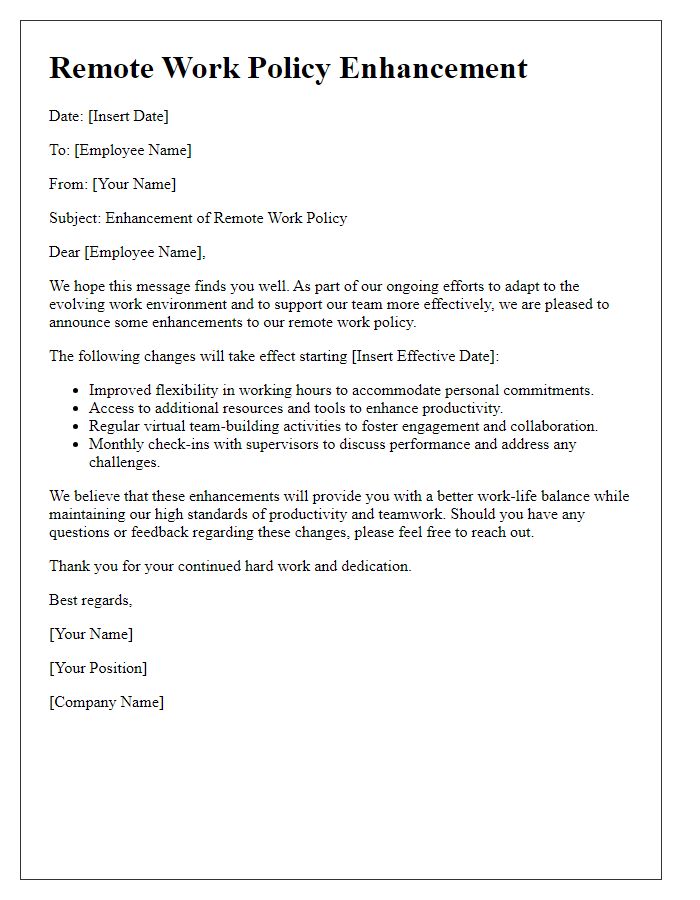
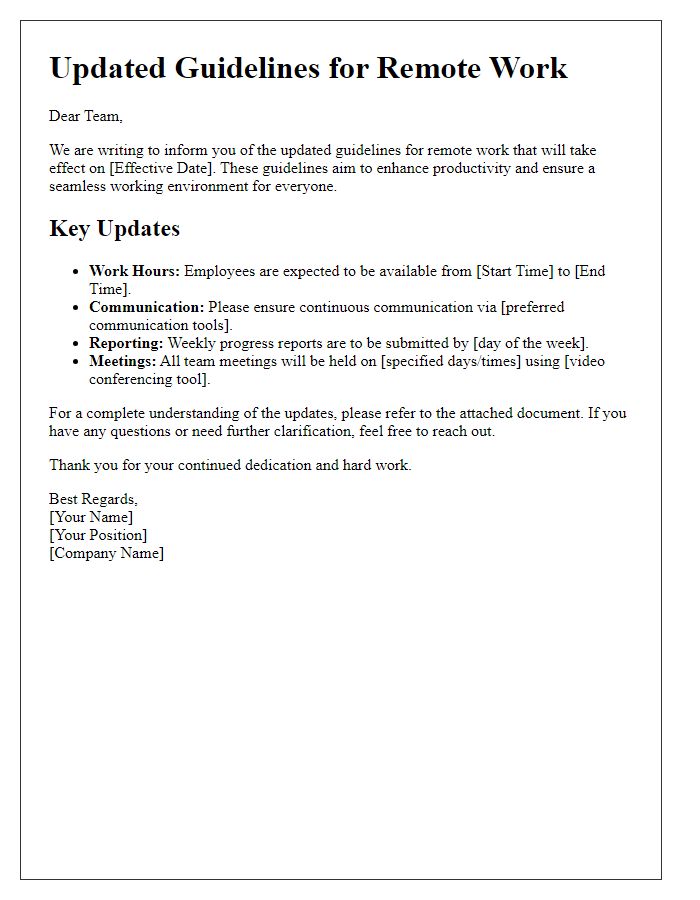
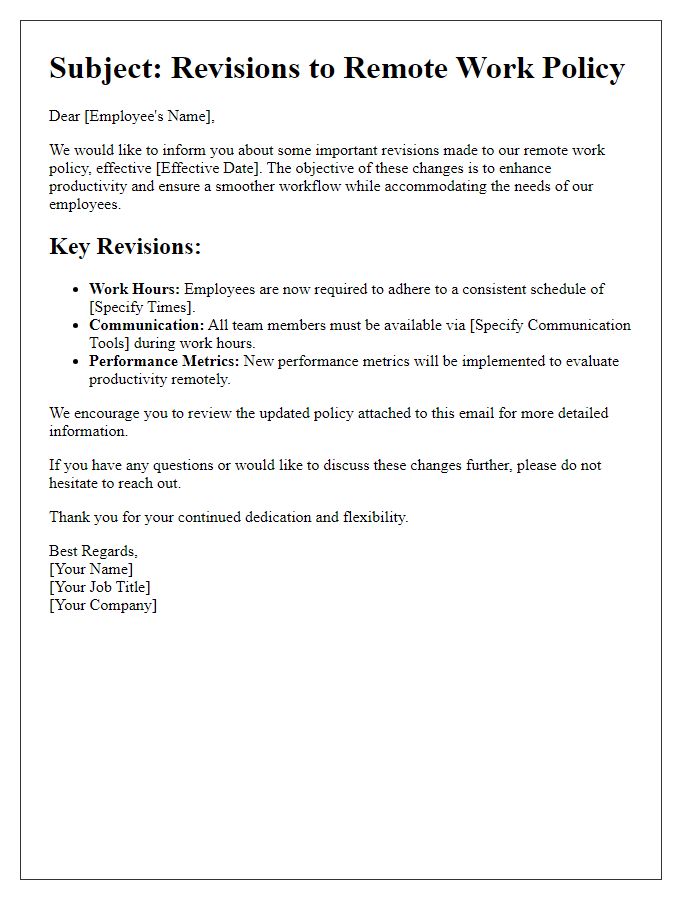
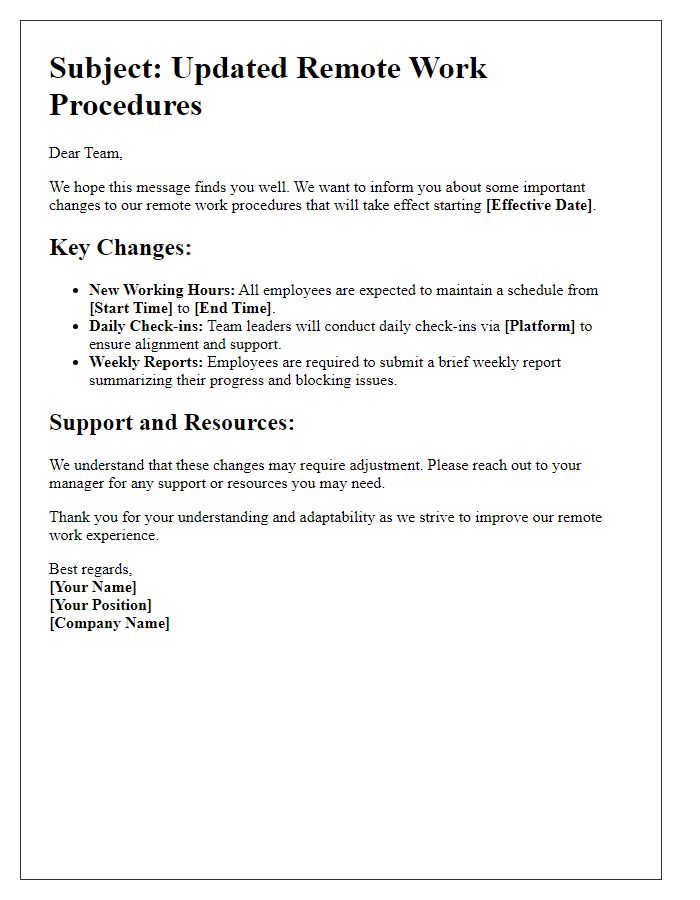
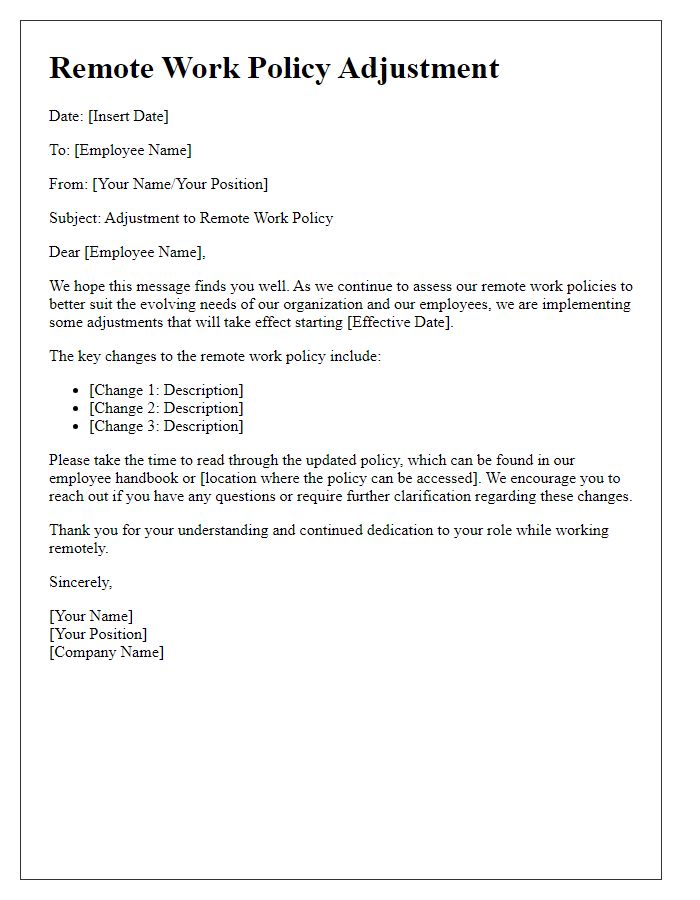
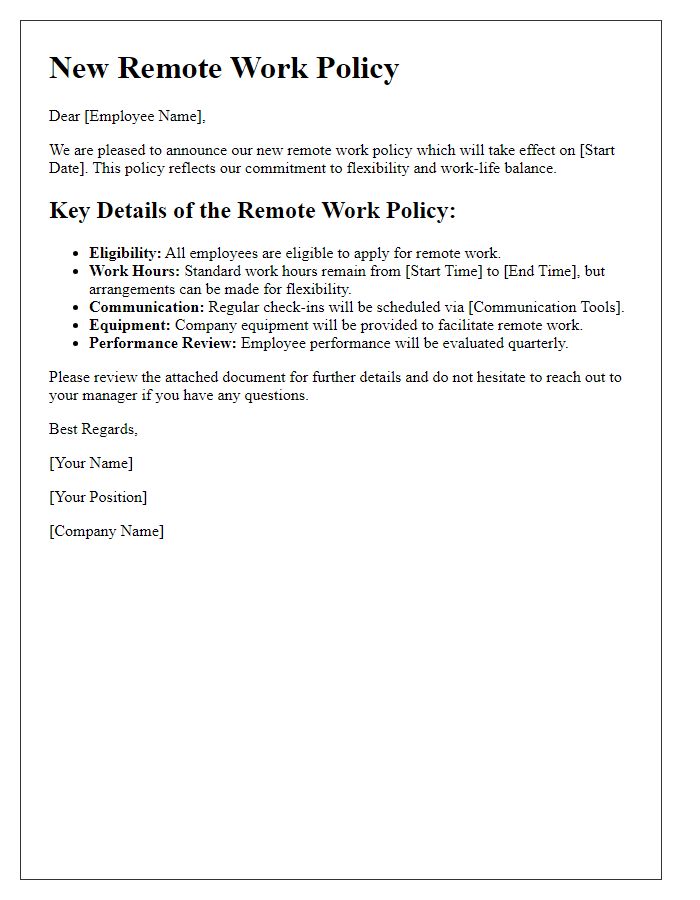
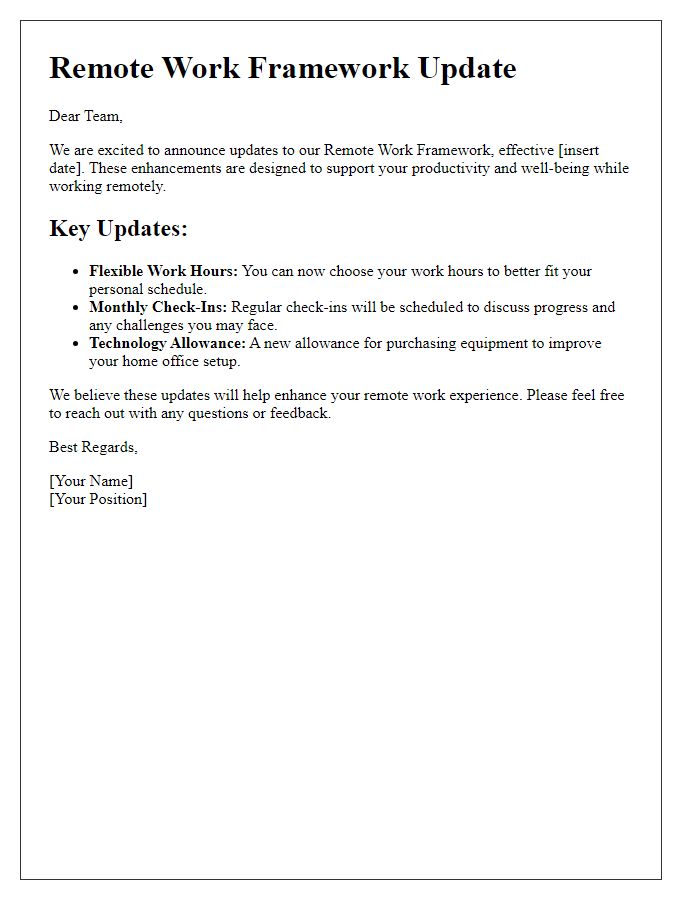
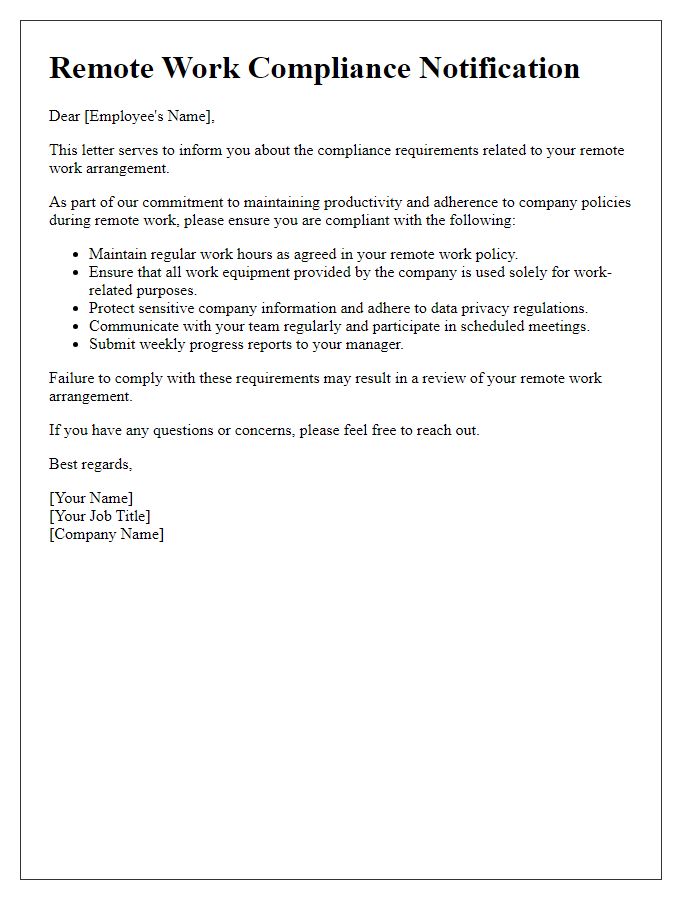
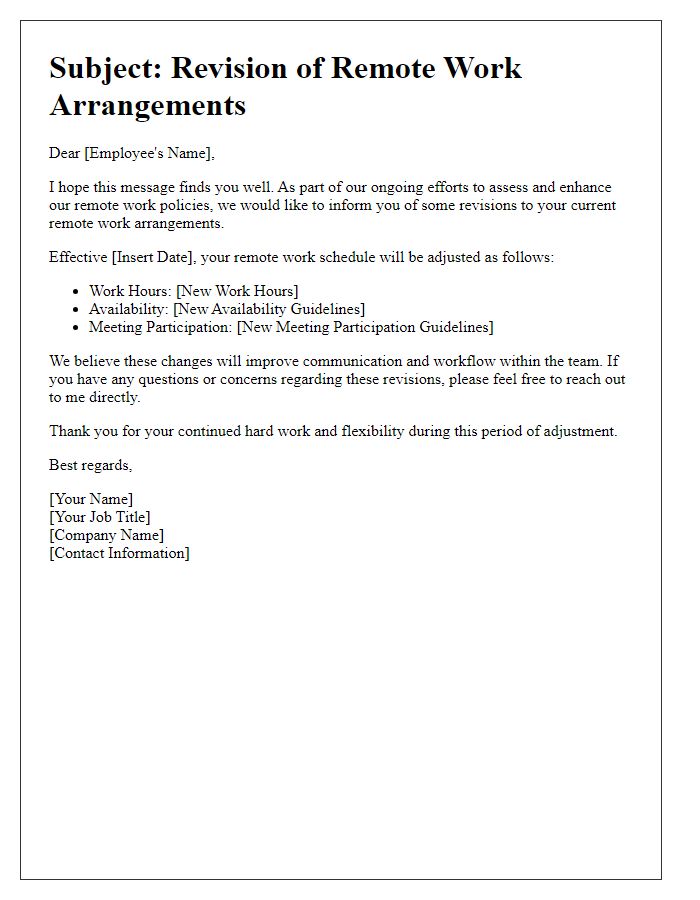
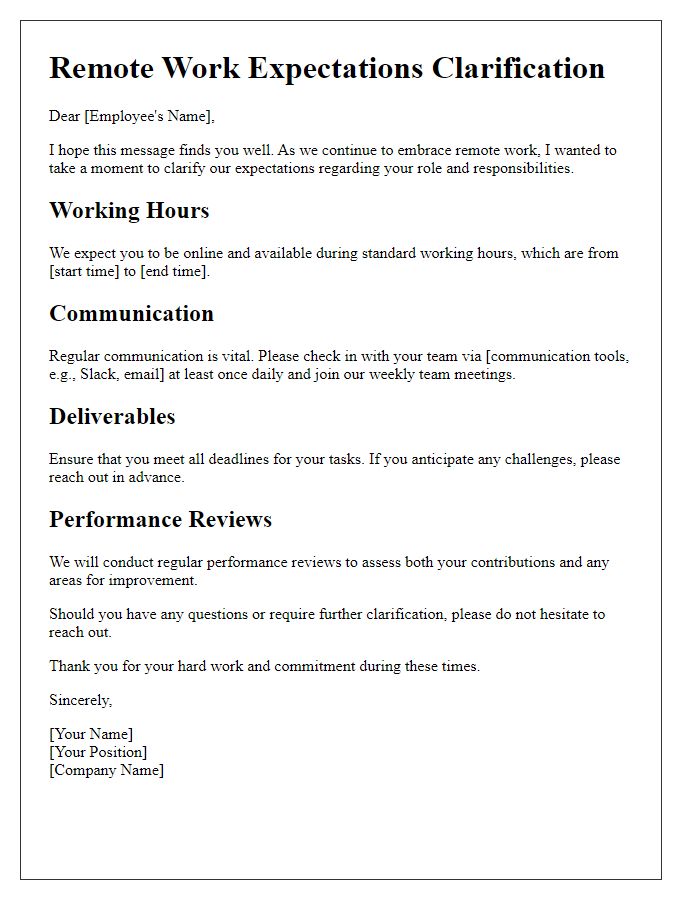





Comments